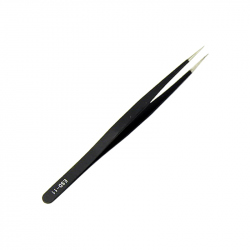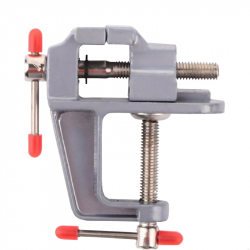Dupa plasarea solicitării de comandă, in sectiunea Istoric puteti vedea cate solicitări de comandă mai avem de procesat inaintea dumneavoastra
Program de lucru: Luni - Vineri 9:00 - 18:00, pauza 13:00 - 14:00.
Se efectueaza lucrari de mentenanta la site si pot aparea erori. In cazul in care intampinati erori va rugam sa reincercati mai tarziu.
Ridicarea personala este disponibila pentru comenzile achitate in avans. Se pot ridica dupa ce sunt pregatite.
Niciun produs
 Mărește
Mărește
Bară de Senzori Infraroșu Reflectivi QTR-8RC
0104110000010254
Produs nou
Bară de Senzori Infraroșu Reflectivi QTR-8RC utili pentru roboții urmăritori de linie.
Acest produs nu mai este in stoc
- Scrie o recenzie
- Elimina acest produs din lista mea de favorite.
- Adauga acest produs la lista mea de favorite.
- Imprimă
Informații
Caracteristici tehnice:
- Tensiune de alimentare: 3.3V sau 5V;
- Curent maxim consumat: 100mA;
- Output: 8 pini compatibili cu pinii digitali;
- Distanță optimă de detectare: 3mm;
- Distanță maximă de detectare recomandată: 9.5mm.
Pașii pentru citirea senzorului:
- Porniți LED-urile IR (opțional);
- Selectați pin-ul ca fiind de output și puneți-l pe HIGH;
- Așteptați câteva microsecunde pentru a ajunge condensatorul la 5V;
- Selectați pin-ul ca fiind de input, cu pull-up disabled;
- Măsurați timpul până cănd pin-ul va detecta 0 logic;
- Închideti LED-urile IR (opțional).
Dimensiuni: 2.95" x 0.5" x 0.125".
Produsul este potrivit pentru a fi folosit la roboții urmăritori de linie. Acesta este gândit pentru a face diferența între o suprafață de culoare albă sau culoare neagra cu ajutorul radiației IR, având proprietatea că negrul absoarbe și albul reflectă IR.
Pentru a citi senzorii, aveți nevoie de un microcontroller sau o plăcuță de dezvoltare Arduino ce dispune de 8 pini digitali.
Pentru mai multe detalii, consultați pagina producătorului.
Recenzii
Clienții care au cumpărat acest produs au mai cumpărat:
-

Modul Releu...
30 A Relay Modules (12 V Powered)
$5.28
-

Fire...
Set Fire Tată-Tată (10p, 20 cm)
$1.08
-

$0.48
-

Conector cu...
Conector cu șurub 2p Albastru
$0.24
-

Pensetă...
Aceste pensete drepte sunt fabricate din oțel...
$0.76
-

Shield CNC...
Shield pentru Arduino Uno recomandat pentru...
$5.16
-

LED Roșu de...
LED Roșu de 5 mm cu Lentile Transparente
$0.05
-

Mini...
Mini Menghina de Birou
$4.80
-

Mini Pompă...
Mini Pompă de Apă Submersibilă
$2.40
-

Senzor...
The HC-SR04 ultrasonic sensor is one of the...
$1.56














